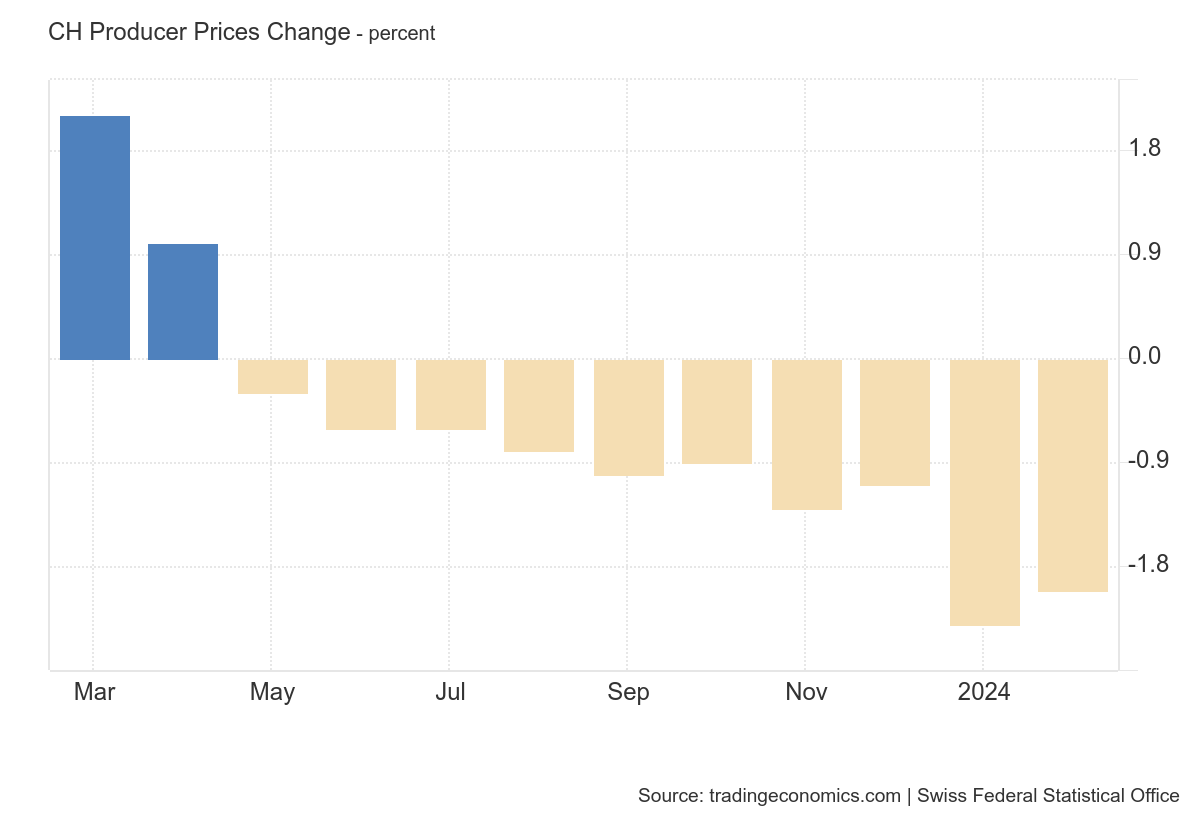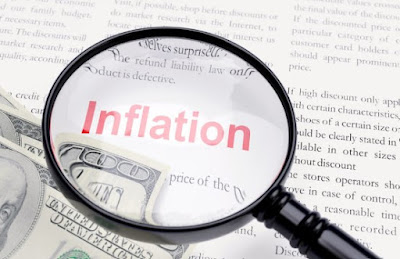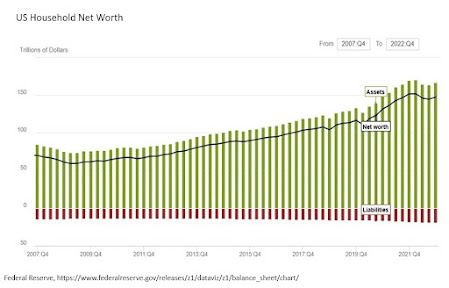It is not that the US dollar had a particularly good week. It was mixed. The best performers were sterling and the Canadian dollar. The pound led with a 1.6% gain, followed closely by the Canadian dollar.
The latest polls suggest that those who want the UK to remain in the EU have generally seen some gains in the polls. Also, unwinding short cross positions against the euro, helped sterling get better traction against the greenback. Firmer oil, better data, and a central bank that did not voice objections to the 9.5% appreciation this year underpinned the Loonie.
The currencies that the dollar did gain against is important, and its broader technical tone improved. The US Dollar Index rose for the second consecutive week, something not seen for two months. We have been tracking the widening of interest rate spreads between the US and Japan and the US and Germany. We have been looking for some technical evidence that the dollar's downtrend over these past several months is ending, which is what the price action appeared to provide last week.
The dollar recorded its best week against the yen since October 2014, rising roughly 2.6%. The greenback began the week retesting the JPY107.70 lows in the immediate reaction to the failure of OPEC and non-OPEC countries to agree on a freeze in output. However, the dollar bounced smartly and within 48 hours was testing the JPY110 area.
It took reports before the weekend that the BOJ may consider changing a negative interest rate on loans (not just on some deposits) to extend the short squeeze through JPY111.45, which matches the 61.8% retracement objective of the decline since March 29, to a high near JPY111.80. This was particularly noteworthybecause of the weakness in US equities that often corresponds with a stronger not weaker yen. Our next target is JPY112.30. The dollar finished the week above its 20-day moving average (~JPY110.20) for the first time in nearly a month. The five-day average will likely cross above the 20-day average early next week.
The wide interest rate differential between the US and Japan make it costly to be long yen without momentum. Momentum and trend followers appear heavily represented in the futures market, and they have been caught the wrong way. This may see the tone shift from selling dollar rallies to buy dips.
The euro declined by about 0.45%. The magnitude is nothing about which to get excited. However, the importance of the price action is that the euro reversed lower from a test on $1.14. The euro's technical tone has weakened. The five-day average crossed below the 20-day average for the first time since the March 10 ECB meeting. Although the RSI is neutral, the MACDs are trending lower.
There was follow through selling after the reversal on April 21, and the single currency made a new low (~$1.1218) for the week, ahead of the weekend. We had identified support in the $1.1220-$1.1235 area and a convincing break would target $1.1140 On the upside, the move back above the $1.1320 area would suggest more work is needed for euro's top to be forged. The US premium over Germany on two-year money has been trending in the dollar's favor since April 7 when it dipped briefly below 120 bp. It finished last week at 132 bp, the largest premium since March 28.
Sterling was the best of the majors last week, gaining 1.6% against the dollar. It recouped the losses from the previous two weeks and is now up almost 0.4% on the month. Strong economic data is not fueling sterling's recovery. Employment data and retail sales disappointed. The UK provides a preliminary estimate of Q1 GDP. The median expects that growth slowed to 0.4% from 0.6% in Q4 15.
We suspect that weakness of the euro and yen spurred cross rate gains that allowed sterling to move to the upper end of its range against the dollar. Surveys and the events market PredictIt shows that the risk of Brexit has been reduced on the margins. Sterling did not only shrug off disappointing economic news but also was resilient before the weekend, despite having recorded a bearish outside down day on April 21.
Sterling is flirting with a down trendline drawn off the early-February high and March highs. It was near $1.4410 before the weekend. Although on April 21 and April 22, the trendline was penetrated on an intraday basis, sterling has not closed above it. The next resistance is cited near $1.4500-$1.4520. While the technical tone is constructive, we suspect that the overall dollar direction will drive sterling.
We are also not convinced that Brexit fears are over. Three-month implied volatility has softened over the past couple of weeks, but it remains elevated compared with any period but the most recent over since 2010. The premium being paid for three-month puts over calls (25-delta) remains near record levels. Note that starting with the new week, two-month options can be used protection for the UK referendum. We suspect investors and businesses with sterling exposure have simply backed off a bit and looking for better prices to raise hedge ratios. We peg support for sterling in the $1.4280-$1.4300 area.
Perhaps, if one feel compelled to trade sterling from the long side, the crosses against the euro, Swiss franc or yen may be a more efficient way to express the view. The euro has been trending gently lower against sterling since April 7, so one is not picking a top. The euro closed below GBP0.7800 support before the weekend, and finished on its lows. This could see euro fall toward GBP0.7680, and possibly GBP0.7550.
With its pre-weekend advance, sterling retraced 50% of its losses against the Swiss franc since early February (~CHF1.4090). The 61.8% retracement target is by CHF1.4250, which is near last month's highs (~CHF1.4285) is the next objective A note of caution on both euro-sterling and sterling-Swiss, the strong move has pushed prices to their Bollinger Bands.
Sterling also bottomed against the yen on April 7. The five and 20-day averages have now crossed, and sterling shot through the 38.2% retracement objective (~JPY160.60) of the drop since the February 1 peak near JPY175.00. The next target is JPY162.60, though if we are right and an important extreme for the yen is in place, then over the next few weeks, JPY166.00 should not be ruled out.
The Australian dollar posted a big outside up day to start last week. It made a marginal new high for the move on April 21 before recorded a key reversal. Neither the RSI nor MACDs confirmed the new highs, and there was follow through selling before the weekend. The next immediate target is $0.7685. A break could spur a move to retest the $0.7590-$0.7620 area. A move now back above $0.7780 warns picking a top is still premature.
The price action last week saw the Canadian dollar replace the Japanese yen as the strongest currency here in April as well as this year. Governor Poloz of the Bank of Canada did not express any anxiety toward the Canadian dollar's appreciation in stark contrast to Japanese officials. Better Canadian data, including retail sales, and firmer than expected March CPI readings was a source of resiliency for the currency.
The Canadian dollar traded broadly sideways after recovering from the knee-jerk decline in response to the Doha news. The US dollar traded in a range between CAD1.2600-CAD1.2625 on the downside to CAD1.2760 on the upside. Given the interest rate differential, being long the Canadian dollar during a range affair is not costly.
The technical condition of the Canadian dollar appears better than for the Australian dollar. The Australian dollar has been tracking a trendline higher against the Canadian dollar since last August. A trendline drawn off those August lows, connect last November low with last month's lows. The trendline comes in near CAD0.9770 by the end of next week. A break could signal a relatively quick move toward CAD0.9600.
The June light sweet crude oil contract recovered smartly from the Doha spike to $39.00 and finished the week near the highest level since last December. Neither the RSI or MACDs, nor the price action provide encouragement to pick in top in oil. If the $45 hurdle can be overcome, the next target is $46.50. We think the oil correction is mature, and as the price approaches $50 a barrel, we will be looking for reversal patterns and divergences to signal a better opportunity to pick a top.
The generic US 10-year Treasury yield rose 12 bp last week to 1.87%. In so doing, it recouped 61.8% of the decline in yields since the March FOMC meeting. The 1.95%-2.00% area offers a formidable cap. The 10-year breakeven (spread between the yield of the inflation-protected security and the conventional 10-year yield) is around 165 bp, up 15 bp since the March FOMC meeting.
The June note futures met its 61.8% retracement objective at 129-09. We see the June note in the middle of what may turn out to be a 128-00 to 130-00 range. It recorded a large outside down day in the middle of last week and saw some follow-through selling in the last two session of the week. The losses were sufficient to test the lower Bollinger Band. Selling pressure eased before the weekend.
The S&P 500 rallied to new highs for the year on April 20 at 2111. Anticipating the "W" or double bottom earlier in the year, we noted that the measuring objective was near 2100. As this target was approached, we have been warning that the market was fragile.
The S&P 500 came under some profit-taking pressures in the second half of last week, encouraged by some disappointing earnings from a few large technology companies amid an earnings season that is coming in better than expectations that had been guided lower. Buying did not materialize late in the session as has frequently been the case and the April 21-22 closes were near the lows. The new highs were not confirmed by the technical indicators.
The two-day decline managed to retrace 38.2% of the gains since the April 7 low which was found near 2081.50. While we are concern about the risk-reward at these levels and the vulnerability we see in the technical condition, we recognize its resiliency. The 50% retracement is around 2072.5 and the 61.8% retracement close to 2063.3, with the 20-day moving average in between at 2069. The S&P 500 has closed only twice since late-February below the 20-day moving average.
Tags: Bank of Canada,Currency Movements,Dollar Index,FX,newslettersent








































